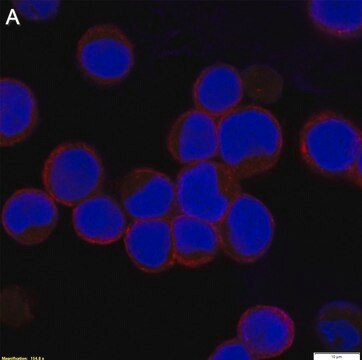MAB8599
Anti-RSV Antibody, fusion protein, all type A, B strains, clone 131-2A
clone 131-2A, Chemicon®, from mouse
Synonym(s):
RSV Fusion
About This Item
Recommended Products
biological source
mouse
Quality Level
antibody form
purified immunoglobulin
antibody product type
primary antibodies
clone
131-2A, monoclonal
species reactivity
human
manufacturer/tradename
Chemicon®
technique(s)
ELISA: suitable
flow cytometry: suitable
immunofluorescence: suitable
western blot: suitable
isotype
IgG2aκ
shipped in
wet ice
General description
Specificity
Immunogen
Application
ELISA
Immunoblotting: (using purified F protein preparations, clone identified a ~70kDa band, Tripp, RA et al 2003)
Final working dilutions must be determined by end user.
Infectious Diseases
Infectious Diseases - Viral
Target description
Physical form
Storage and Stability
Analysis Note
RSV Control Slides, Catalogue Number 5012-5
Other Notes
Legal Information
Disclaimer
Not finding the right product?
Try our Product Selector Tool.
recommended
Storage Class
12 - Non Combustible Liquids
wgk_germany
WGK 2
flash_point_f
Not applicable
flash_point_c
Not applicable
Certificates of Analysis (COA)
Search for Certificates of Analysis (COA) by entering the products Lot/Batch Number. Lot and Batch Numbers can be found on a product’s label following the words ‘Lot’ or ‘Batch’.
Already Own This Product?
Find documentation for the products that you have recently purchased in the Document Library.
Our team of scientists has experience in all areas of research including Life Science, Material Science, Chemical Synthesis, Chromatography, Analytical and many others.
Contact Technical Service







